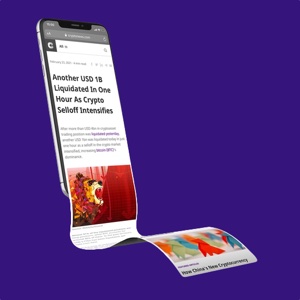Web3 Firm Infura Recruits Microsoft, Tencent, and Others To Build Decentralized Infrastructure Network


Microsoft, Tencent, and 16 other Web2 companies have partnered with blockchain software company Consensys, with the goal of decentralizing the Infura network.
The Infura network is currently the key point of access to Ethereum for much of the DeFi industry. With this collaboration, the companies seek to increase decentralization on Infura to prevent outages of the Web3 services that use it, such as the wallet service MetaMask.
In a press release issued today, Infura announced that the introduction of its Decentralized Infura Network (DIN) alongside the initial group of 19 partners marks a significant milestone in the ongoing process of progressive decentralization for one of the most widely used web3 API services in the ecosystem.
“We are immensely grateful to all our partners who have been part of the journey to build the Decentralized Infrastructure Network with us over the past year,” said E.G. Galano, co-founder of Infura and the project and technical lead for DIN. “Together, we have achieved remarkable progress and eagerly anticipate the continuation of this journey as we bring the power of DIN to Web3 developers and users.”
Consensys senior product manager Andrew Breslin told Cointelegraph that the significance of the partnerships was more about the goals of big-name firms aligning with Infura rather than “who they were.”
“The cost and complexity involved with running a service like Infura was kind of limiting in terms of who we could partner with to serve this traffic,” Breslin said. “Now there’s this huge flourishing ecosystem of Web3 infrastructure providers that can provide a service that’s complimentary to Infura.”
The DIN is positioned as a remedy to the centralization challenge faced by Infura. Presently, Infura is controlled by Consensys, meaning there is a single point of failure. DIN aims to address this concern by decentralizing the network, starting with a Q4 launch.
The DIN will debut with two initial features: failover protection on Polygon and Ethereum. This functionality enables users to redirect RPC (Remote Procedure Call) traffic from one DIN partner to another, ensuring continuous service in the event of an outage.
In the upcoming weeks, Infura users will have the option to opt-in to DIN’s failover protection, contributing to reduced centralization and increased uptime for decentralized apps and developers.
In its statement, Infura also announced that the first version of DIN would be “federated around the original group of partners announced today.” The company expects to welcome more members in the future and will also look to unveil a roadmap for the progressive decentralization of DIN.
“By contributing to DIN, we’re not just helping to stand up an open protocol, we’re architecting a revolution for developers where permissionless innovation becomes the norm,” said Austin Roberts, founder and CEO of Rivet, one of the Web2 firms collaborating with Infura.




